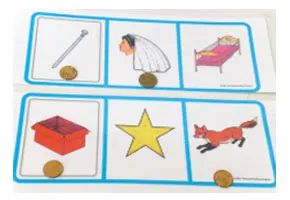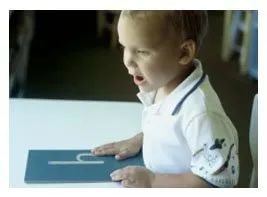Development of Language
Focus on Learning to Read
After decades of controversy about how to teach children to read, American universities conducted extensive research at multiple sites over an extended thirty-year period of time to determine the most effective techniques. The conclusions were that there are three “non-negotiables” of early reading. That means they are so strongly indicated in replicated research studies that they are beyond discussion. We need to give children these three things:
1. Phonemic Awareness. Phonemes are the smallest units of sound in our language. So if you say the word “cat” you hear three phonemes: /c/ /a/ /t/. If you say the word “stop” you hear four sounds or phonemes: /s/ /t/ /o/ /p/. Since English is an alphabetic language in which letters stand for sounds, in order to read and write effectively, children need to be able to detect the discrete sounds. This is phonemic awareness. It can be taught and Age of Montessori has developed a lovely sequence of steps to teach it in our early reading sequence.
Here is an example of concrete materials to work with rhyming. You take the picture on the left and say it aloud. Find another picture in the row that rhymes with it and mark them both, so in the top row we have “nail” and “veil.” (The fact that they are not spelled the same way is not important; remember, this is sound work and the child does not yet know how the words are spelled. What the adult knows about spelling is not relevant at this stage.) In the bottom row, we have “box” and “fox.”

We have activities like this for all the major phonemic awareness skills.
2. Alphabetic Principle. This is the fundamental understanding that letters represent sounds. Because this is so important, we teach the sounds the letters make rather than their names. This is not the same thing as the child learning his alphabet. Children often learn their ABCs by rote memory without truly understanding the alphabetic principle. In Montessori, this is not the case. This little fellow is tracing, seeing, hearing, and saying the sound /h/ with the sandpaper letter.

3. Application. The third non-negotiable is applying the first two essentials to reading and writing. Montessori does this with simple elegance with the movable alphabet. Here you see a little boy who has taken the object “cat.” He knows the sounds of the word: /c/ /a/ /t/, and he knows which letters represent those sounds. He gets the letters, puts them in order, and he has just formed the word “cat.” In this picture, his big sister is helping him learn to write the word he has just built.

Given that this research is from the last two decades, it is quite interesting to see what Maria Montessori was saying more than eighty years ago. Montessori’s own words, which follow, were written down by Elisabeth Caspari during her course with Maria Montessori in 1943.
Dr. Maria Montessori on Phonemic Awareness
It is only by representing formations of sounds by signs that we are able to capture language that would otherwise be lost with the sound. In the written word history springs to life; the subtlest philosophical thought waits patiently for us to solve and understand its ideal; the contemplations of poets remain for us to return to them time and again; and the trials and discoveries of scientists are treasured for posterity.
The alphabet is a sign language. This sign language is a language of frozen sound. By having analyzed each sound element, isolated it from others and given it a particular sign, we have created an alphabet. Then comes the study of the spoken word, the elements of sound which constitute each word. When we have examined a word and know its sound parts, we need only take these parts and substitute for them the corresponding signs. And lo, the sound stands a graven image before us.
This then is what we must help the child to do: 1.) Name certain signs by sound, 2.) Dissect words into sounds and 3.) Recompose the word, substituting signs for sounds.
It is so simple and so effective, yet it has eluded so many educators for so long, and American children have paid a fearsome price in soaring illiteracy rates that simply do not need to be.






















